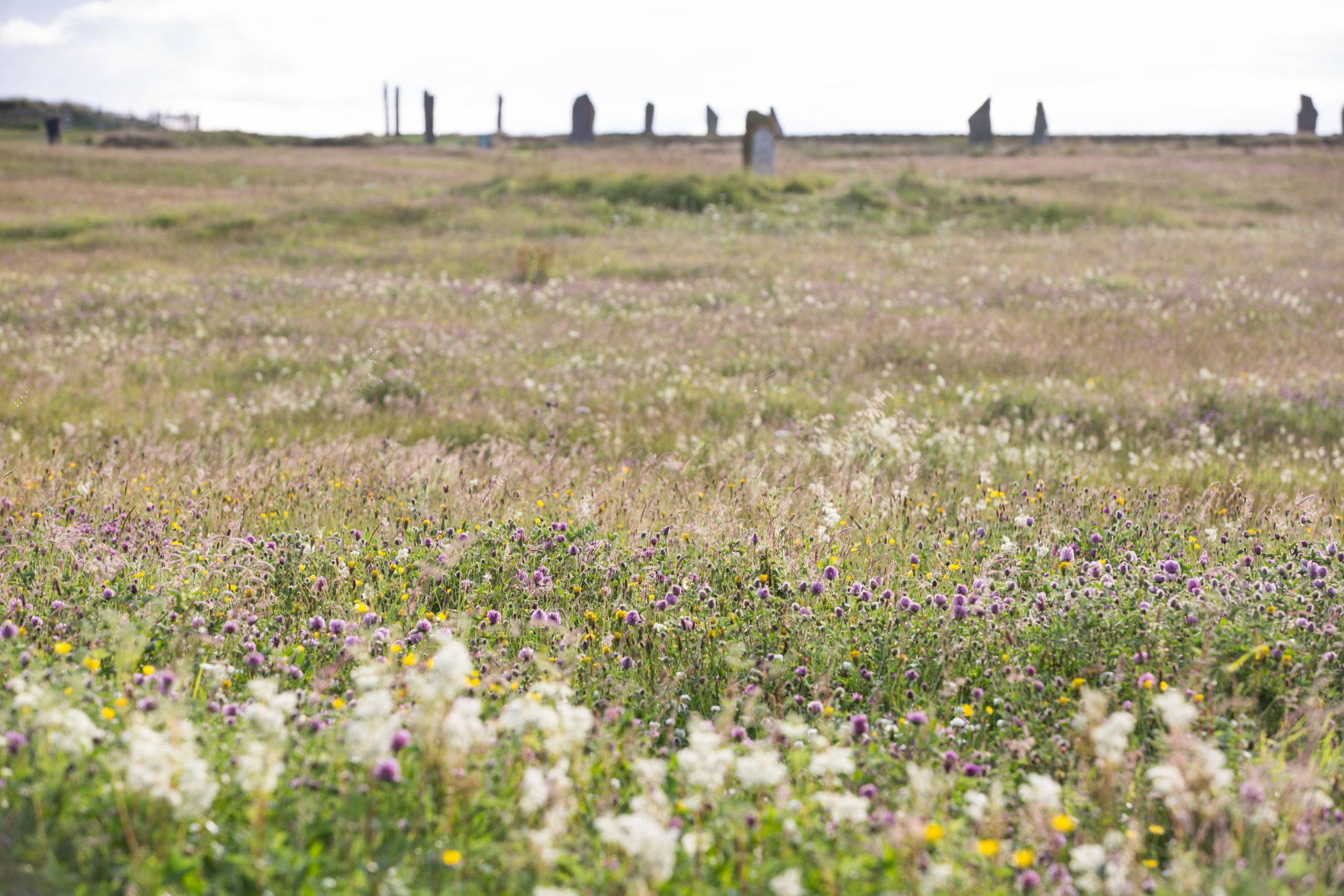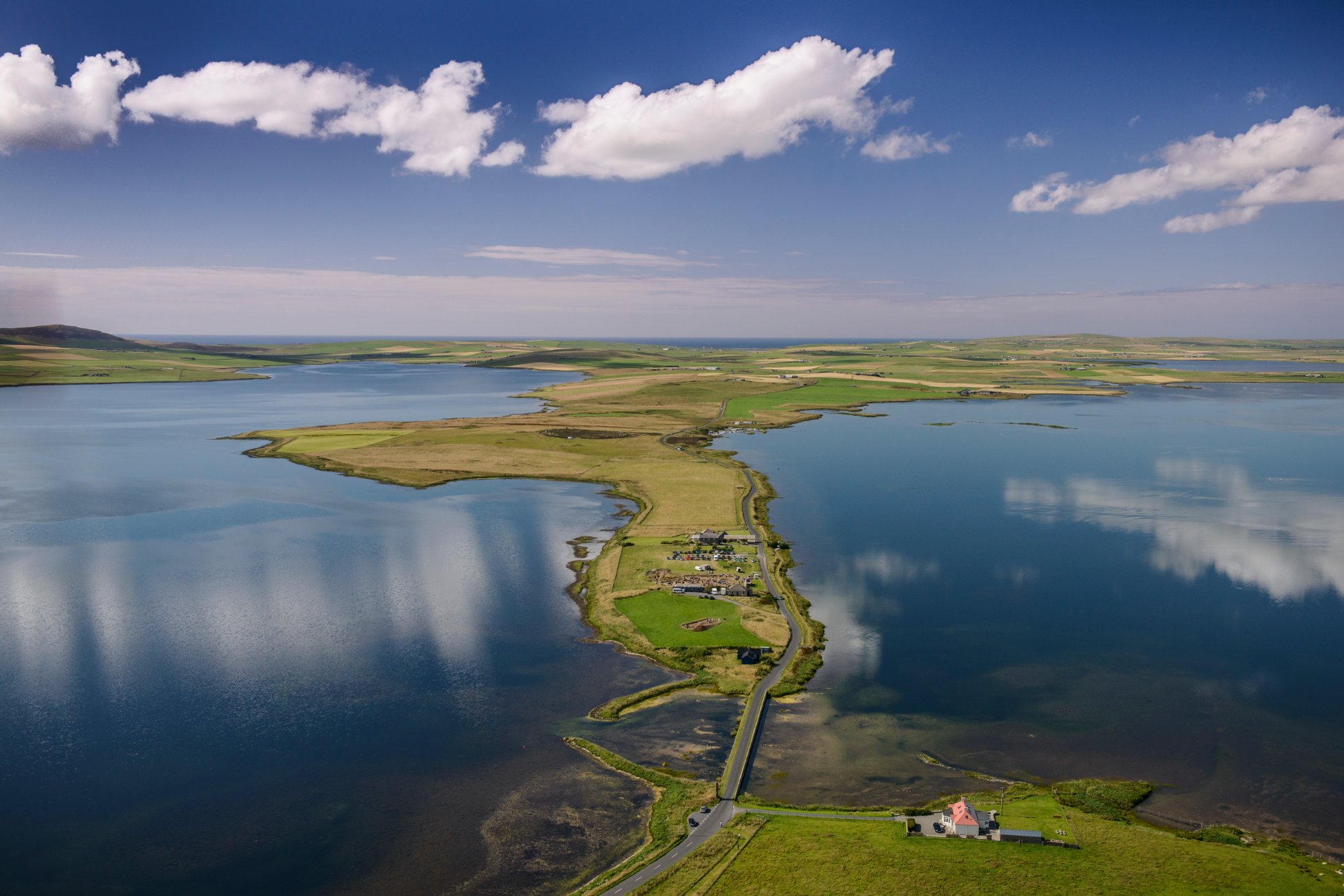Orkney's World Heritage Site was inscribed by UNESCO in 1999 and it welcomes visitors from around the world every year.
The Ring of Brodgar, Skara Brae, the Standing Stones of Stenness and Maeshowe are all special locations in this Neolithic landscape, where thousands of years of history can be experienced alongside some stunning island scenery.
There is so much to see in the Heart of Neolithic Orkney so we thought we’d concentrate on some of the area’s secrets.
Here are our favourite 'lesser-known' reasons why we think a visit should be on your itinerary.
It’s hard to keep your eyes off the stone circles and archaeologists in action when you’re in the Heart of Neolithic Orkney.
Take a look around though and you’ll see plenty of natural attractions too. The Brodgar peninsula is a haven for wildlife, with swans in the lochs, skylarks and migrating birds across the area, and even the chance of an otter sighting as well.
The RSPB’s Brodgar Nature Reserve is home to beautiful wildflowers and insects, or you could take a walk along the beach at the Bay of Skaill at Skara Brae and see seals bobbing about in the clean, clear blue water.
The one question that always gets asked at our World Heritage Site attractions is ‘why were they built?’
There are no straight answers, though. Was the Ring of Brodgar linked to astronomy and the passage of the moon? Was there a direct link between the positioning of the Standing Stones of Stenness and Maeshowe? Why did the people of Skara Brae leave their village?
It’s frustrating to some that we’ll never fully know the answers, but for us that’s part of the beauty of our World Heritage Site. The secrets will stay that way, and it’s up to you to make your own mind up.
A tour is definitely the best way to get inside knowledge about our World Heritage Site.
You can join the Historic Environment Scotland Rangers for tours of the Ring of Brodgar and the Standing Stones of Stenness all-year-round.
Join the experts and uncover some of the stories of these fascinating Neolithic sites.
A tour inside the Neolithic tomb of Maeshowe is an absolute must when you’re in Orkney.
Crawl through the low entrance tunnel into the beautiful central chamber and be amazed at the intricate building work. But pay close attention to certain stones and you’ll see runic inscriptions, scrawled onto the walls by Viking warriors after breaking into the cairn hundreds of years ago. There are also examples of graffiti, including one of our favourites - ‘Haermund Hardaxe carved these runes’ – the Viking equivalent of ‘Haermund was here’.
You’ll also see the Maeshowe Dragon carving, one of the most important symbols of Orkney’s history and heritage.
It’s hard to describe a 19-foot-high monolith as a secret, but the Watch Stone which stands guard over the entrance to the Brodgar peninsula can often be overlooked in the rush to explore the Neolithic attractions that lie beyond.
The huge slab of stone stands at the point where the road narrows into a causeway and the lochs of Stenness and Harray meet. It could have been part of a long-ago-disappeared stone circle, or perhaps a ceremonial route between the stone circles of the Ring of Brodgar and the Standing Stones of Stenness.
Whatever its past, it’s a great spot to stop for a photo before you continue your journey into the Heart of Neolithic Orkney.
If you're inspired to visit Orkney to see these sites for yourself, plan your trip and search for accommodation via our website. You can also view and download our special World Heritage Orkney itinerary to help you find your way through the ancient Orkney landscape.








